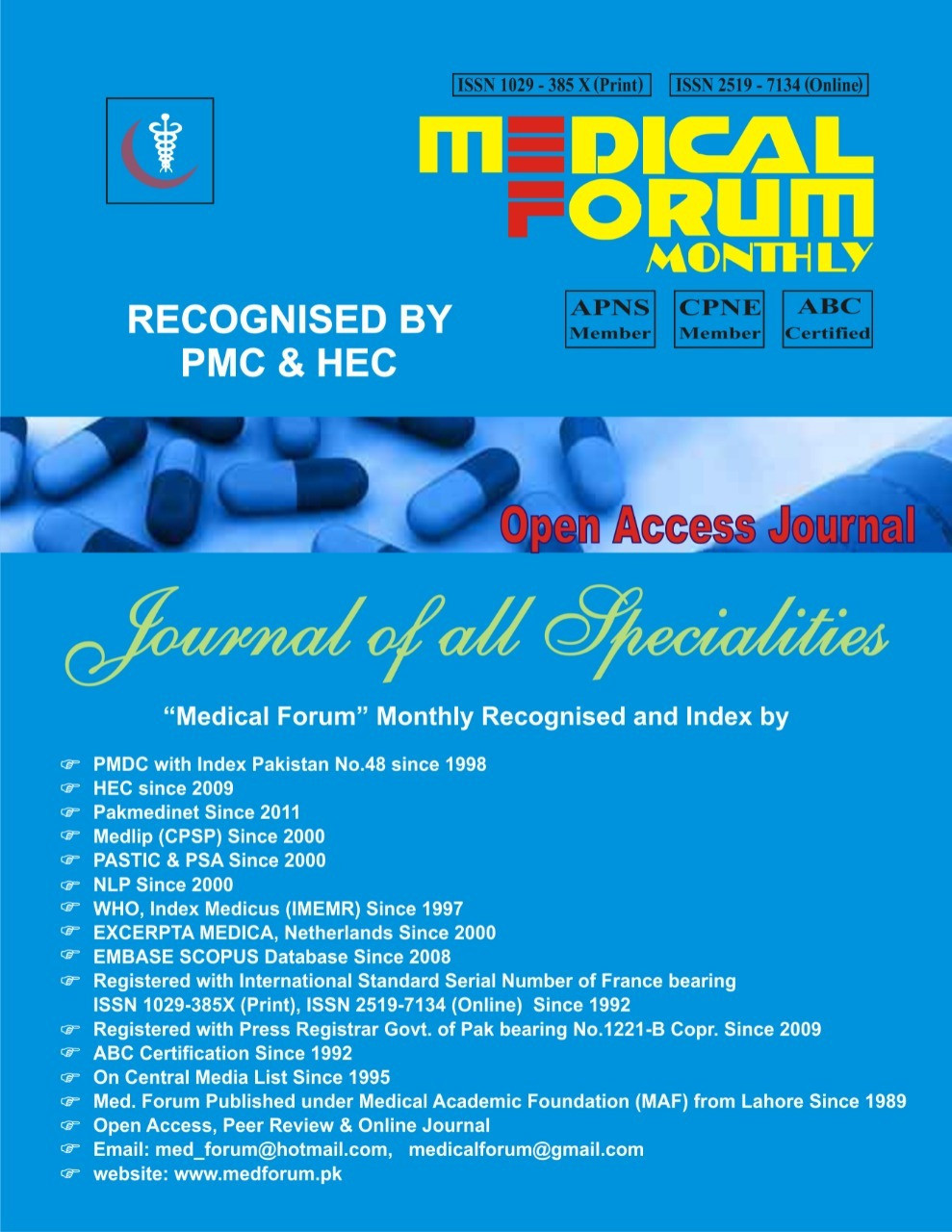
9. Frequency of Bacterial Meningitis in Vaccinated Versus Unvaccinated Children in Age Group 6 Months to 5 Years
Anam Zaman1, Abdul Khaliq1, Muhammad Yahya Khan2, Syed Mohsin Ali Shah1, Zia Muhammad1 and Sabir Khan1
ABSTRACT
Objective: To determine the prevalence of bacterial meningitis in children who present to Khyber Teaching Hospital in Peshawar between the ages of six months and five years.
Study Design: A Cross sectional study
Place and Duration of Study: This study was conducted at the Department of Pediatrics, KTH, Peshawar from August 1, 2022 till January 31, 2023.
Methods: The non-probability sequential sampling approach was used to enroll 108 children, of either gender, who had fever fits and were between the ages of 6 months and 5 years. The study was carried out with the parents' signed informed permission and the hospital ethics committee's clearance. Youngsters who had fever fits were hospitalized, and all of them had lumbar punctures to determine the prevalence of bacterial meningitis. SPSS 23 was used to enter and evaluate the data.
Results: 108 individuals with a “mean age of 33.2±15.02” months were recruited in our Study. There were 48 (44.4%) female patients and 60 (55.6%) male patients. The majority of patients (n=51, 47.2%) were from the middle class. class higher n - 31 (29%)class lower n-26 (24%) Males' socioeconomic position is 55 percent, females' is 48 percent. Prevalence of Bacterial Meningitis by Vaccination Status: 81 individuals (75%), were vaccinated, while 27 individuals (25%) were not. The correlation between vaccination status and bacterial meningitis is as follows: n = 60 (55%) and n = 48 (45%) are unvaccinated. Age and Bacterial Meningitis Association: < 12 n-25(23%), 12-24 n-25(23%), < 24-36 n-25(24%), and < 36-48 n-32(32%) Relationship Between Meningitis Caused by Bacteria and Gender n-65 (70.2%) male and n-43 (29.8%) female Children who were not immunized had a considerably higher incidence of bacterial meningitis (p-value < 0.001). Age and gender had no bearing on the prevalence of bacterial meningitis (p-values, respectively, 0.112 and 0.573). The mean weight of the patients was 12.4±3.4 kg. The incidence of bacterial meningitis was significantly greater in children who were not vaccinated (p-value < 0.001).
Conclusion: Unvaccinated children are more likely to get meningitis.
Key Words: Vaccination, bacterial meningitis, children, prevalence, immunization.
